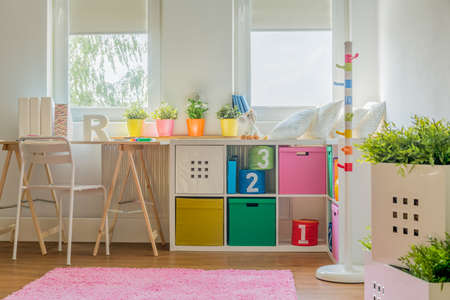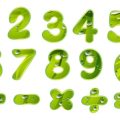Introduction: Bringing Feng Shui to the Modern American Home
Feng Shui might sound like a mystical art from ancient China, but it’s become a fresh way for American families to rethink their homes and create spaces that just feel better. At its heart, Feng Shui is all about balancing energy—what the Chinese call “chi”—so your home works with you instead of against you. But here’s the twist: today’s busy American households need practical solutions, not complicated rituals. That’s where modern trends come in! By focusing on each room separately, you can bring harmony and flow to every corner of your house, no matter if it’s a bustling family kitchen or a cozy bedroom retreat. In this article, we’ll explore how classic Feng Shui ideas fit right into contemporary American life, helping you design spaces that support everything from family movie night to your work-from-home setup. Ready to see how small changes can make a big difference? Let’s start our room-by-room journey!
2. The Heart of the Home: Feng Shui in the Living Room
When it comes to American family living, the living room is where everyone gathers—whether it’s movie night, weekend hangouts, or hosting friends for a game. Applying Feng Shui here isn’t just about tradition; it’s about making your space feel welcoming, open, and full of good vibes. Let’s break down how you can give your living room that positive energy boost with some easy-to-follow Feng Shui tips.
Furniture Arrangement: Flow is Key
Start by thinking about flow—both for people and energy (or “chi”). Avoid blocking walkways with big couches or coffee tables. Arrange your furniture so there’s a clear path through the room, and try to have the main sofa face the entryway if possible. This not only feels inviting but helps everyone relax and see who’s coming in.
| Do | Don’t |
|---|---|
| Face sofas toward the door | Block entryways with large furniture |
| Create open pathways | Cram too many items together |
Choosing Colors: Set the Mood
The right colors can really change the vibe. In American homes, neutral tones like beige, soft gray, or light blue keep things calm and flexible for any occasion. Want more energy? Add pops of color with throw pillows or art. Here’s a quick guide:
| Mood | Recommended Colors |
|---|---|
| Relaxing & Cozy | Earth tones, light blues, gentle greens |
| Lively & Social | Pops of orange, yellow, or red (in moderation) |
Positive Vibes for All
A happy living room welcomes everyone—family and guests alike. Keep clutter to a minimum: storage baskets and simple shelves are your friends! Include a mix of soft lighting (think table lamps or string lights) to create warmth during movie nights or intimate gatherings.
Quick Tips for Good Energy:
- Add plants for fresh air and natural beauty (snake plant or pothos work well indoors)
- Use mirrors to reflect light and make your space feel bigger—but avoid placing them directly opposite doors
- Display meaningful photos or artwork that make you smile
- Scented candles or essential oils like lavender can help everyone relax after a busy day
Your Living Room, Your Sanctuary
By blending these Feng Shui basics with American style and comfort, you’ll create a living room that truly feels like the heart of your home—a place where everyone wants to gather, laugh, and unwind together.
![]()
3. Sleep Well: Bedroom Feng Shui for All Ages
If there’s one room where Feng Shui can really shine in your American home, it’s the bedroom. Whether you’re designing a cozy master suite, a fun kids’ room, or a welcoming guest space, Feng Shui offers practical tips to enhance comfort and harmony. Let’s break down some simple, modern ways to bring good energy to every bedroom—no incense required!
Master Bedroom: Your Sanctuary
The master bedroom is all about relaxation and connection. In Feng Shui, bed placement is key: try to position your bed so you can see the door but aren’t directly in line with it—a “command position” that brings security and calm. Avoid placing the bed under a window if possible; if you have to, use heavier curtains for extra support. Keep electronics to a minimum (yep, that means maybe leaving your phone on the dresser), and personalize your space with calming colors and meaningful décor. Soft lighting and natural fabrics help create a restful vibe, perfect for busy American lifestyles.
Kids’ Bedrooms: Balance Fun and Rest
For children’s rooms, Feng Shui encourages a playful yet soothing environment. Place beds away from the door and windows to avoid drafts and noise. Storage is important—clutter-free spaces help kids focus and sleep better. Add personal touches like favorite books or art, but keep things organized with bins or shelves. Choose cheerful but not overly bright colors to spark creativity without overstimulation. A nightlight or soft lamp can add extra comfort at bedtime.
Guest Rooms: Welcoming Harmony
A well-designed guest room says “mi casa es su casa.” Place the bed where guests can easily see the door as they wake up, but not directly facing it (nobody wants to feel startled). Fresh linens, extra pillows, and neutral tones make the space inviting for everyone. Add a small table or chair for convenience—guests will appreciate these thoughtful touches. Keep décor simple but warm; a few plants or family photos go a long way in making visitors feel at home.
Bed Placement Basics
No matter whose bedroom you’re working on, remember these quick Feng Shui basics: avoid having the bed share a wall with a bathroom, don’t let clutter collect under the bed (energy needs to flow!), and pick bedding that feels good to you—it’s all about comfort and rest.
Encouraging Restful Sleep
Finally, keep bedrooms tech-light and distraction-free. Consider blackout curtains if streetlights are an issue (hello city dwellers!), and try calming scents like lavender for relaxation. By giving each room its own thoughtful touch, you’ll create peaceful retreats tailored to every member of your American family—and maybe even score some better sleep along the way!
4. Kitchen Karma: Nourishing Family Energy
The kitchen is often called the “heart of the home” in American families, and Feng Shui totally agrees! This space is where family members gather, share meals, and create memories. But did you know your kitchen layout and décor choices can actually influence health, happiness, and the overall vibe of your household? Let’s explore some easy ways to boost energy flow in your American-style kitchen—no major renovations required!
Appliance Placement: Cooking Up Good Vibes
Where you put your stove, fridge, and sink matters a lot in Feng Shui. Ideally, these three should form a triangle (the classic “work triangle”), making movement smooth and minimizing chaos. Avoid placing the stove directly across from the sink or refrigerator—this can create clashing energies.
| Appliance | Feng Shui Tip |
|---|---|
| Stove | Keep it clean & uncluttered; avoid facing directly toward the main door. |
| Refrigerator | Place to the side of the kitchen entrance for welcoming abundance. |
| Sink | Avoid direct alignment with the stove to prevent water-fire conflict. |
Smart Storage: Out of Sight, Out of Mind
Clutter is a big Feng Shui no-no—especially in the kitchen. Make sure countertops are tidy and only display items that spark joy or have daily use. Invest in closed cabinets or stylish baskets to stash away snacks, utensils, and appliances you don’t use every day. This not only keeps things looking neat but also helps energy (or “chi”) flow freely through the space.
Décor Choices: Boosting Health & Togetherness
Your kitchen colors and décor can set the mood for healthy eating and happy gatherings. Go for warm tones like soft yellows or earthy greens—they’re inviting and stimulate appetite without feeling overwhelming. Add natural elements like a bowl of fresh fruit, a vase of flowers, or even small potted herbs on the windowsill.
| Décor Element | Feng Shui Benefit |
|---|---|
| Bowl of Fruit | Symbolizes prosperity and good health. |
| Potted Herbs | Adds freshness and encourages family involvement in cooking. |
| Family Photos/Art | Cultivates togetherness and positive energy during mealtimes. |
Quick Tips for Modern American Kitchens:
- Install bright, layered lighting to keep energy lively—even during late-night snack runs.
- Avoid sharp-cornered counters if possible; choose rounded edges for a softer feel.
- If your kitchen opens into other living spaces (hello, open-concept!), use area rugs or islands to visually separate zones while keeping energy flowing smoothly.
The Bottom Line:
Your kitchen doesn’t have to be picture-perfect to welcome great energy! A few thoughtful tweaks can help nourish both your family’s bodies and their spirits—one delicious meal at a time.
5. Workspace Wisdom: Home Office and Study Areas
As remote work and digital learning become staples of American family life, creating harmonious home offices and study nooks is more relevant than ever. Integrating Feng Shui principles into these spaces doesn’t mean you need to hang crystals everywhere or move your desk every week—it’s about making mindful tweaks that support focus, creativity, and a healthy balance with screen time for everyone in the household.
Modern Feng Shui Tips for Productive Workspaces
Choose the Right Location
If possible, select a room or corner with good natural light and minimal distractions. According to Feng Shui, facing the door (but not directly in line with it) gives you a sense of security and control—perfect for those big Zoom presentations or homework sessions.
Declutter for Clarity
The classic “clear space, clear mind” mantra is both a modern productivity hack and a timeless Feng Shui rule. Keep only what you need on your desk—think laptop, lamp, maybe a plant—and stash away paperwork or gadgets you don’t use daily.
Bring Nature Indoors
Adding a small plant like a pothos or snake plant can boost energy flow and reduce stress. If real plants aren’t your thing, even artwork featuring nature scenes can help create a calming vibe while keeping things stylishly American.
Balancing Screen Time with Energy Flow
Smart Tech Placement
Place screens so they don’t face beds or rest areas, helping to mentally separate work from relaxation. Use blue-light filters after sunset to protect your family’s sleep rhythms—a tip both modern science and ancient wisdom would agree on!
Personalize Your Space
Let each family member add something personal—maybe a favorite quote, photo, or fun desk accessory. This keeps motivation high without cluttering up the “chi.”
Quick Wins for Busy Families
- Add task lighting for late-night study sessions.
- Use baskets or drawers to hide cables and chargers.
- Open the window occasionally for fresh air and new energy.
By combining practical organization with Feng Shui’s mindful placement ideas, any American family can transform their home office or study area into a place where productivity feels natural—and creativity flows just as easily as the Wi-Fi.
6. Feng Shui for the Outdoor Spaces
When it comes to Feng Shui, don’t forget your home’s outdoor spaces! In American homes, the front yard, entryway, patio, and backyard all play a big role in setting the tone for positive energy. Let’s dive into some easy and culturally-friendly tips to boost both your home’s curb appeal and backyard vibes—making every arrival and gathering feel inviting, prosperous, and joyful.
Entryway Magic: Welcome Good Energy
Your front door is known as the “mouth of chi” in Feng Shui. Start by keeping this area tidy and well-lit. In the U.S., a fresh doormat with a friendly message or seasonal design feels welcoming and on-trend. Add potted plants on either side of the door—think vibrant flowers or evergreens. Avoid clutter like old shoes or packages lingering outside; clear pathways invite opportunities to your doorstep!
Front Yard: Curb Appeal with Chi Flow
An American-friendly front yard combines neatness with personality. Trimmed hedges, healthy lawns, and colorful flower beds help energy flow smoothly toward your home. If you have space, curved walkways are more auspicious than straight ones—they guide good vibes gently rather than rushing them in. A water feature (like a small fountain) near the entrance symbolizes abundance—just make sure it’s clean and well-maintained.
Backyard Bliss: Patio & Garden Harmony
The backyard is where families gather for BBQs, birthdays, or just relaxing weekends. Arrange seating areas so everyone can see the garden—this “command position” helps people feel secure and connected. Mix soft elements (cushions, hammocks) with natural touches (wooden furniture, stones). Use string lights or lanterns to create a warm glow that extends social time into the evening.
Plants That Prosper
Certain plants are said to bring good luck in Feng Shui—and they’re popular in American gardens too! Try lucky bamboo (in pots), jade plants by entrances, or sunflowers for cheerfulness. Native pollinator plants not only thrive but also support local wildlife—a win-win for good energy and eco-friendliness.
Outdoor Decor: Keep It Positive
Add wind chimes to gentle breezes; choose uplifting garden art or statues that reflect your family’s personality—think playful gnomes or inspirational plaques. Just keep things balanced; too many decorations can block energy flow.
Bring Joy Outside In
Finally, keep doors and windows clean so you can enjoy garden views from inside—that connection between indoor and outdoor spaces boosts happiness year-round. With these simple Feng Shui-inspired ideas tailored for American living, your outdoor areas will radiate prosperity, positivity, and plenty of neighborly charm!
7. Trending Now: Blending Feng Shui with American Family Trends
Finding the sweet spot between ancient Feng Shui wisdom and today’s American home trends is all about flexibility, creativity, and family connection. As more U.S. families embrace multi-generational living, open-concept layouts, and eco-conscious materials, Feng Shui adapts beautifully to these evolving needs. Instead of strict rules, think about practical harmony—like placing communal seating for both conversation flow and positive energy, or using natural light and plants to support both well-being and style.
The Modern American Family Home
Today’s households often include grandparents, parents, and children under one roof. Feng Shui encourages zones for privacy as well as togetherness, making it easy to set up quiet corners for reading and energetic spaces for family meals. Open kitchens that flow into living areas are perfect for boosting family chi (energy) while also being on trend in American design.
Balancing Old Wisdom & New Looks
You don’t need to give up your love of bold accent walls or smart home gadgets to enjoy good Feng Shui. Try integrating personal items and heritage pieces in public spaces—they spark joy and connection while enhancing the home’s energy. Storage solutions can be both functional and Feng Shui-friendly by keeping clutter at bay and allowing energy to circulate freely.
Simple Tips for a Harmonious Home
To wrap up: Embrace a little trial-and-error as you blend Feng Shui concepts with what works for your family’s lifestyle. Start small—maybe add a welcoming entryway mat, let in fresh air daily, or use mirrors to reflect light and positive vibes. The heart of modern American Feng Shui isn’t perfection—it’s creating a nurturing space where everyone feels comfortable, supported, and inspired.


